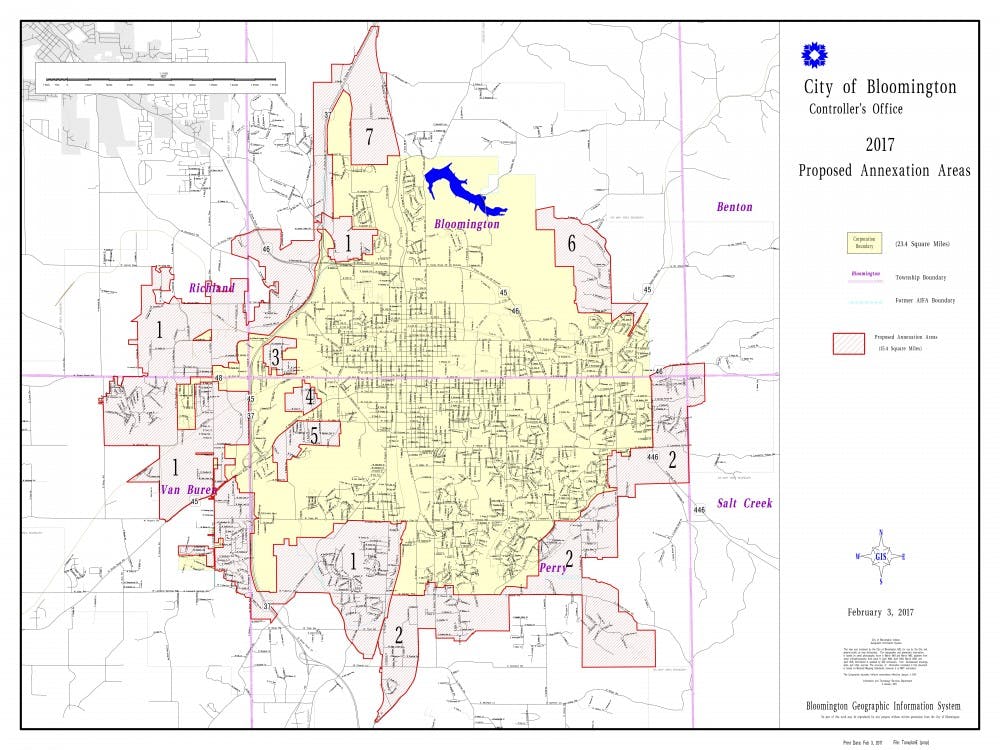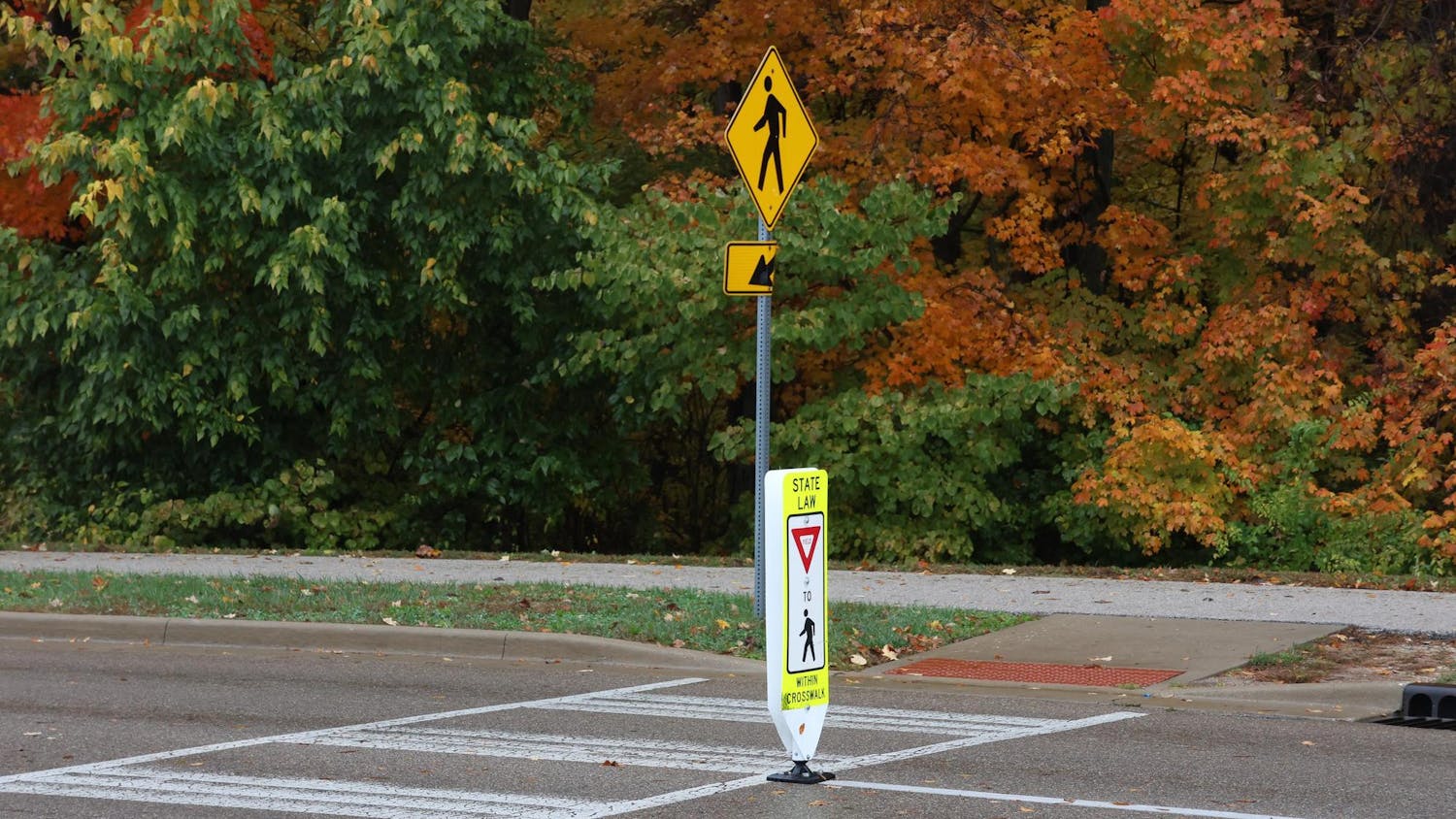Bloomington Mayor John Hamilton proposed an expansion of city boundaries by nearly 10,000 acres Friday.
Seven areas have been proposed to be part of the official bounds of the city. These areas expand as far south as the intersection of Rogers and Walnut streets; as far west as the block of West Gifford Road, S.R. 48 and South Park Square Drive; as far north as the intersection of S.R. 37 and North S.R. 37 Business; and as far east as Heritage Woods Road.
This would add about 15,000 more people to the city population and bring the total population of Bloomington to 100,000. This would make Bloomington the fifth largest city in Indiana, according to the most recent Census data.
Three areas that are already within the city limitations but are not an official part of the municipalities are also a part of the annexation.
These areas are the block of Evergreen Drive, North Johnson Avenue, West Third Street and North Kimble Drive, and space around the block; land on both sides of South Cory Lane; and land from the corner of Adams and Allen streets to Bloomfield Road, down to the corner of Weimer and Wapehani roads.

“I believe this is the right thing to do for our community,” he said.
Bachelor Middle School will now be a part of the city and therefore will have transportation provided to these families.
The Ivy Tech campus will also be an official part of the city, and students will be able to benefit from city transportation from it. Cook Medical operations will also be in city limits.
Other city benefits the new residents will receive will include city fire and law enforcement assistance, city trash and recycling services, broadband services, new voting blocs and road repair. Residents will also pay city taxes.
Four of the districts are in a fire protection district that enforces a delay on annexation.
Annexations also cannot become effective the year before the census, which is why there is a three year gap between approval and enforcement.
Procedurally the proposal from Mayor Hamilton is just an introduction of the issue to the city council. The council will approve the resolutions and ordinances regarding annexation throughout the year.
A series of public meetings will also take place in the last week of March and throughout the spring regarding citizens’ responses to the proposal.
“We are asking you to commit to process,” Hamilton said to the city council during an internal work session Friday.
Residents of the seven areas proposed for annexation will have 90 days after it is adopted by the council to petition against it.
The city plans to earn between $9 million and $12 million each of the first four years of annexation through property taxes and other public revenue streams. These would be able to cover most or all of the annual costs of the annexations for their first four years as official parts of the city.
The city also plans to issue a 10- or 20-year bond to pay off capital expenditures for the annexations. These capital costs are expected to be between $13.6 million and $21.6 million.
In the city’s fiscal research plan on the proposed annexation, the new areas — particularly those on the western and southern sides of the current city limits — will heavily benefit from the I-69 expansion.
According to its finance research report conducted by Reedy Financial Group, the annexations are intended to assist controlled economic development along the expansion, including street and utility developments.
More than eight miles of the I-69 expansion will span two of the proposed annexations.
The city council will consider the annexation of all seven areas at Wednesday’s committee meeting.
Public meetings for the rest of the annexation process for the year
Wednesday Resolutions for the annexation will be proposed to the Council Committee of the Whole
Feb. 15 City council will consider adoption of initiating the resolutions
Feb. 17 Notice of public outreach program will be mailed to landowners and publicized
March 20 - 21, March 24 Public information meetings, 6-8 p.m. in City Hall
March 22-23, 25 Public information meetings, 11 a.m.-1 p.m. in City Hall
March 31 Notice of public hearings to be publicized and mailed to landowners
May 31 Public hearings on proposed annexations
June 28 Consider adoption of annexation ordinances and any fiscal plan updates
July 7 Notice of adoption of annexation to be publicized and mailed to landowners outlining the remonstrance process. Landowners in the annexation areas will have 90 days from this day to file a petition against the annexation.
Oct. 6 Annexation ordinances could be eligible for recording and filing
Jan. 1, 2020 Annexation takes effect




